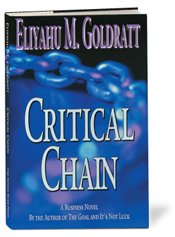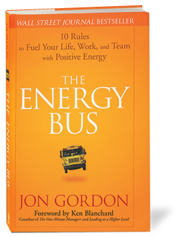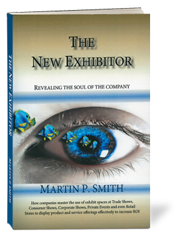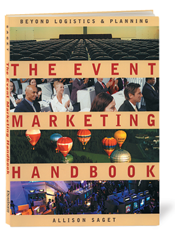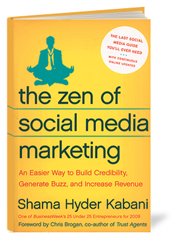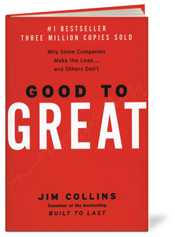|
Book Report
"If we encounter a man of rare intellect," Ralph Waldo Emerson once advised, "we should ask him what book he reads." While the leader of the transcendentalist movement was likely thinking more Henry David Thoreau than Stephen R. Covey, his sentiment rings true regardless of the genre. So, taking a page from the famous writer's book, EXHIBITOR presents its fifth annual Summer Reading List. Featuring tomes suggested by our 2013 Editorial Advisory Board members — seasoned exhibit and event marketers and thought leaders in their own right — this year's selection explores a range of relevant topics, including social media, customer relationships, exhibit design, project management, and more. Read on to discover board members' insights and learn what makes each book a volume worth exploring. By Lena Valenty
Structured as a story following the adventures of protagonist and title character Mr. Shmooze, this book suggests that the best salespeople give for a living. The book is a light read that has something for everyone.
What makes "Mr. Shmooze" different from other
business books you've read?
Mr. Shmooze is the story of a man who lives passionately, energizes others, and adds value to people's day-to-day lives. While some ideas are not new, the demonstrations, suggestions, and concepts in the book — and how Mr. Shmooze applies them — are truly inspirational. In one chapter, Mr. Shmooze hosts a dinner. You are walked through the logistics of planning it and given the reasons why it turned out to be such a success. As an event planner, I was pleased to see such preplanned detail — a recurring concept throughout the book. While you'll have to read it to see what was done, I've used several of the techniques Mr. Shmooze demonstrated.
How has reading this book helped you professionally?
It offers various tips and insights that I have applied throughout the past few years. For example, there's a passage in the book that reads, "Numbers, if accurate, are not only more hard-hitting, but they are also 10 times more memorable than words." I now integrate numbers and statistics into speeches, demos, and Power Point presentations — and that tactic really seems to work well.
What would you say is the book's primary takeaway?
Relationship building is key. When we arrange events, our goal is to not only help the invited guests have a great time, but also to have those guests tell everyone else they had a great time.
I believe that anyone who reads the book (and it is a light read) will take away something that will help them in their career and in other aspects of their lives.
 Kimberly Greenberg, CMP, CTSM, event marketing manager, Guggenheim Investments Kimberly Greenberg, CMP, CTSM, event marketing manager, Guggenheim Investments |
The art of building relationships is not about taking or persuading; it's about giving.
Listen effectively, understand the needs of others, and add value by giving more than you are getting in return. You should elevate the buyer's overall experience as a result of your relationship.
It's no secret that you can't accomplish great things without the help of great people along the way. "Taking People With You" extols the virtues of working with others to achieve goals in both your personal life and your professional life.
What's the main lesson you learned from the book?
The main lesson in "Taking People With You" is that you'll never accomplish anything big or important if you try to do it alone. David Novak, chairman and CEO of Yum! Brands (the company that owns Taco Bell, KFC, and Pizza Hut brands), presents a step-by-step guidebook to setting goals, building a strong team, owning your personal development, and working for continual improvement. To quote the book's introduction, "We all need people to help us along the way. You can only go so far by going it alone. If you want to start a business, if you want a big promotion, if you are developing or launching a new product, if you want your company to move in a new direction ... you're going to need people to help you get there."
You mentioned the "guidebook" approach. How does that come into play?
I call it a guidebook and a reference for personal growth because it makes you reflect on the things you can do every day to grow your own personal brand. The author shares quotes, lessons learned, and insight from famous and successful people, and pairs them with often overlooked, basic principles and common-sense ideas. I have the paperback version in my travel bag. It's full of useful nuggets, such as "6.5 seconds that matter," which is the length of time you have to reach the consumer and/or your target audience.
Has this book significantly helped you in your role as an exhibit manager?
There are many lessons about marketing, messaging, branding, changing, and
 Kathleen Gunderson, CTSM, events program manager, Wells Fargo Home Mortgage Kathleen Gunderson, CTSM, events program manager, Wells Fargo Home Mortgage |
leading that can be applied to your everyday work as an exhibit manager. Overall, by being a better you, you become better at what you do. The book is meaningful and relevant to leaders at every level, not just CEOs, and I continue to grow and learn each time I open it.
Exhibit and event marketers wear many hats, with "project manager" being one of them. Structured as though a professor is lecturing a class full of students, the book teaches readers how to make efficient decisions that move the right projects forward.
Why did you enjoy reading "Critical Chain"?
This book is a case study of how project management should be done versus how it historically has been done. It is presented as a story instead of a traditional business-theory book to keep the reader interested. There are multiple real-life examples throughout the book to exemplify the different theories of constraints that are identified. The characters feel real, and as exhibit managers, we can relate to making choices every day that impact our marketing programs.
Did you dog-ear any pages?
In one section of the book, the author discusses choosing between two projects that are of equal importance when money is available, and identifying which is more important to execute. It struck a chord with me because we handle all aspects of our trade show program in house, and often come to a crossroad regarding new-build projects. Our internal and external customers forget that there are monetary constraints that don't allow us to move forward on every project. Often, companies will take a safe route and forget that the end result needs to drive the decision-making process. If everyone had the forethought to easily make these decisions, moving forward wouldn't always be so challenging.
What do you think readers will get out of it?
We are project managers of some sort and need to watch the bottom dollar. Although the book does not relate directly to the exhibit industry, many of the parallels are relevant. I'm not a big reader, and I enjoyed reading it. In fact, it has helped me improve my project-management skills. All the skills mentioned in the book —
 Dominique Cook, CTSM, trade show coordinator, Marvin Windows and Doors Dominique Cook, CTSM, trade show coordinator, Marvin Windows and Doors |
estimating, theory of constraints, bottlenecks, etc. — are things that every exhibit manager needs to know. This book reassured me that my project-management skills were strong and that I was handling my day-to-day challenges appropriately.
"The Energy Bus" tells the story of George, a middle-aged man who comes home from work one day and starts to take stock of his life — he is failing at his job, in his marriage, and with his kids. One day his car breaks down and he has to take the bus to work. As a result, he meets a bus driver and passengers who force him to reflect on his life and his failings and to find a better way forward. Over the next two weeks, the bus driver and passengers teach George "10 secrets" for success in life, at home, and in work that ultimately lead to a sense of fulfillment and accomplishment.
What is your favorite part of the book?
I specifically liked when Jon Gordon writes about "energy vampires." He uses this term to talk about those people in your life who drain your energy. He teaches that if you want to be successful, you need to stay positive and not allow energy vampires into your life. They will suck the life out of you, your goals, and your vision if you let them. Once you have read the book, you'll be able to spot these people lurking in your life — and drive stakes straight through their proverbial hearts.
Has this book significantly helped you in your role as an exhibit manager?
This book has absolutely helped me. I apply one or more of the 10 rules on a daily basis. I also teach my associates the rules as well so they can apply them. As exhibit managers, we get caught up in hectic travel schedules, deadlines, and never-ending to-do lists. It is easy for your bus to veer off the positive road. This book will allow you take control of your bus and keep it on the road permanently. You will be different after reading it.
Have you been able apply what you've learned?The book is very easy to read, and the characters portrayed in it are easy to relate to.
 Jerry Samuels, CTSM, manager of conventions, Bayer HealthCare Jerry Samuels, CTSM, manager of conventions, Bayer HealthCare |
Since reading it and applying the "get on the bus" mentality in my work and in my personal life, I can definitely say that it has made a huge difference. After reading the book, you will learn to overcome negativity and adversity to define yourself and create your success.
Learn how to identify the soul of your company and help it shine through your exhibit-marketing program in "The New Exhibitor." Written by behaviorist
Martin Smith, the book explains how exhibit design drives attendee behavior on the trade show floor.
Why should exhibit marketers read this book?
"The New Exhibitor" explains how to plan your booth for optimization. The author helps you figure out the soul of your company by how and what it exhibits, how to bolster attendee attraction, and how to interact with attendees at your trade shows. This book is a great starting point for people who have never done a booth before, as well as people who have been exhibiting for years but might be struggling with not getting results. It prompts you to take a look at what you're doing and how you interact with booth visitors. It's not just about building a pretty booth. You have to give your attendees what they're looking for, which can change from show to show. It also gives you the perspective of the attendee. Sometimes we forget to look at things from their point of view. Ultimately, the trade show isn't about us. It's about them.
Was there a particular section that resonated with you?
My favorite part is when Smith compares exhibiting to physics. He reminds the reader of Newton's first law of motion, which states that an object in motion will continue in motion unless acted upon by a force. Who would have thought that this same law could be applied to exhibiting? Unless you have a desirable, unique booth to stop them, attendees will keep walking down the aisle.
Does "The New Exhibitor" address any common misconceptions when it comes to exhibit marketing?
Absolutely. A lot of industry people have these supposed
 Tim Naegelin, Tim Naegelin,
CME, event manager,
The Boeing Co. |
"formulas" for how to do trade shows and think they can be applied to every single event. Smith gives readers many great guidelines, but reminds them that each show is different and they have to make adjustments based on what they're exhibiting, who their target audience is, and what they want to get out of the show.
A perennial favorite, "The Event Marketing Handbook" has made the Summer Reading List three of the last five years. It explores the complexities of the event manager's role and focuses on strategy and objectives rather than logistics.
How does this book address event planning?
Ask any event- and/or exhibit-marketing professional, and they'll tell you that events and exhibits are a highly strategic and absolutely essential component of any company's overall marketing objectives. Ask the sales team, however, and you might get a different answer. It's been my experience that salespeople view events as necessary evils — money suckers that yield nothing more than a good time and maybe a new contact or two. This book shows you that when done correctly, strategic events can enhance a company's brand and overall presence in the industry. Who doesn't want to accomplish that?
If logistics are just one piece of the puzzle, what are the other pieces?
Event planners are often viewed as task masters who simply check off items on their to-do lists. While that's certainly part of the job, event planners play a much larger role in terms of strategy. This book provides a thorough overview into how an event planner's role can and should be much more strategic — it should be an essential component of accomplishing certain corporate and marketing objectives.
What are the barriers to becoming a strategic thinker?
I can't speak for every event-marketing department, but I'm a one-woman show, so I don't always have the time to sit down and put on my strategic-thinking cap. I'm still in charge of all those logistics and details, and the items on my to-do list won't check off themselves. That said, reading this book has helped me realign my focus and apply the author's "BLT" formula to event planning. Saget introduces
 Erica Deri, Erica Deri,
events manager,
Genetec |
the BLT concept in a section called "Beyond Logistics and Planning: Event BLT." It stands for Brand Recognition, Lead Generation, and Thought Leadership, all three of which event managers should focus on when planning their own events.
Designed as a "living" book with a continually updated companion version online, "The Zen of Social Media Marketing" goes beyond a general overview of social media. Author Shama Kabani positions networking tools like Facebook and Twitter as avenues through which you can personify your company and connect with your customers.
What makes this book different from other social-media books on the shelves?
It's not just a "how-to" book, but also a "why" and "where" book. It teaches the reader how social marketing has changed traditional marketing channels, and explains why it's important to put a personal face on your company, to be sociable, and to listen to your customers and prospects.
Who should read this book?
This book is essential reading for: 1) Businesses that think they understand social-media marketing, but haven't figured out why they aren't getting results. It will teach them why their results aren't what they hoped for, and how to improve. 2) Businesses that know they don't quite understand it, but are curious and want to get started. The book offers excellent how-to instructions that are easy to understand and follow. 3) Individuals who want to build their own personal brand. The book provides great insights into how to make social media work toward that goal, although it never spells it out as such. Readers just have to think of themselves as "the company" when reading the book.
Did you have an epiphany while reading it?
Yes, I did. I grasped the concept that social-media marketing is all about the voice of the customer. It's about people wanting their voices to be heard. It's "Visibility + Credibility = Real Social Media Success," meaning that your presence on social-media sites needs to give something to the social-media community, whether it's advice,
 Diane Benson, Diane Benson,
CTSM, global events manager, GE Healthcare |
insights, entertainment, tips, discounts, or free samples. And you need to build trust. When trust has been established, social-media tools will help to grow your business. It becomes the power of good referrals and testimonials amplified.
"Good to Great," by Jim Collins, is a long-term study of 11 stock-market-listed companies that followed or underperformed the market, underwent a transition, and then returned upwards of three times the market value. It is the methodology of disciplined people engaging in disciplined thought who take disciplined action. This results in sound judgment and ensures unflinching confidence in your decisions.
What inspired you to read "Good to Great"?
In planning for a worldwide meeting of Caterpillar dealers/distributors a few years ago, our then chairman and CEO, Jim Owens, requested we have Collins speak. So the first order of business was to read "Good to Great" to make sure the principles and concepts could be woven into the conference.
What concepts were memorable and applicable for your audience?
The author's concept of "having the right people on your bus" is so solid and even a bit basic, but it is one that is overlooked every day. The book tells you to look at your team as a bus, and to make sure the right people are on the bus and in the right seats.
But doesn't the team leader (aka bus driver) control who gets on the bus?
Sometimes you inherit team members and suppliers and just kind of stick them where you think they'll be the most productive. But how often do you really stand back and evaluate what those people bring to the team? We have to look at everyone on our teams to ensure we have the right people doing the right things.
Do you think this has particular relevance in the exhibit-marketing industry?
People tend to fall into the category of being "good enough" in the face-to-face marketing industry, mostly due to limited time and resources. It's a real make-do situation for a lot of companies, especially considering the economy.
 J. Archie Lyons, IV, global brand marketing creative director, Caterpillar Inc. J. Archie Lyons, IV, global brand marketing creative director, Caterpillar Inc. |
But a critical thing to remember is that "good" is the enemy to "great." This book helped me to see that greatness is not a function of circumstance, but of choices and discipline. And when everyone on the team is in the right position (and doing what they love), that's when you get greatness.
|






